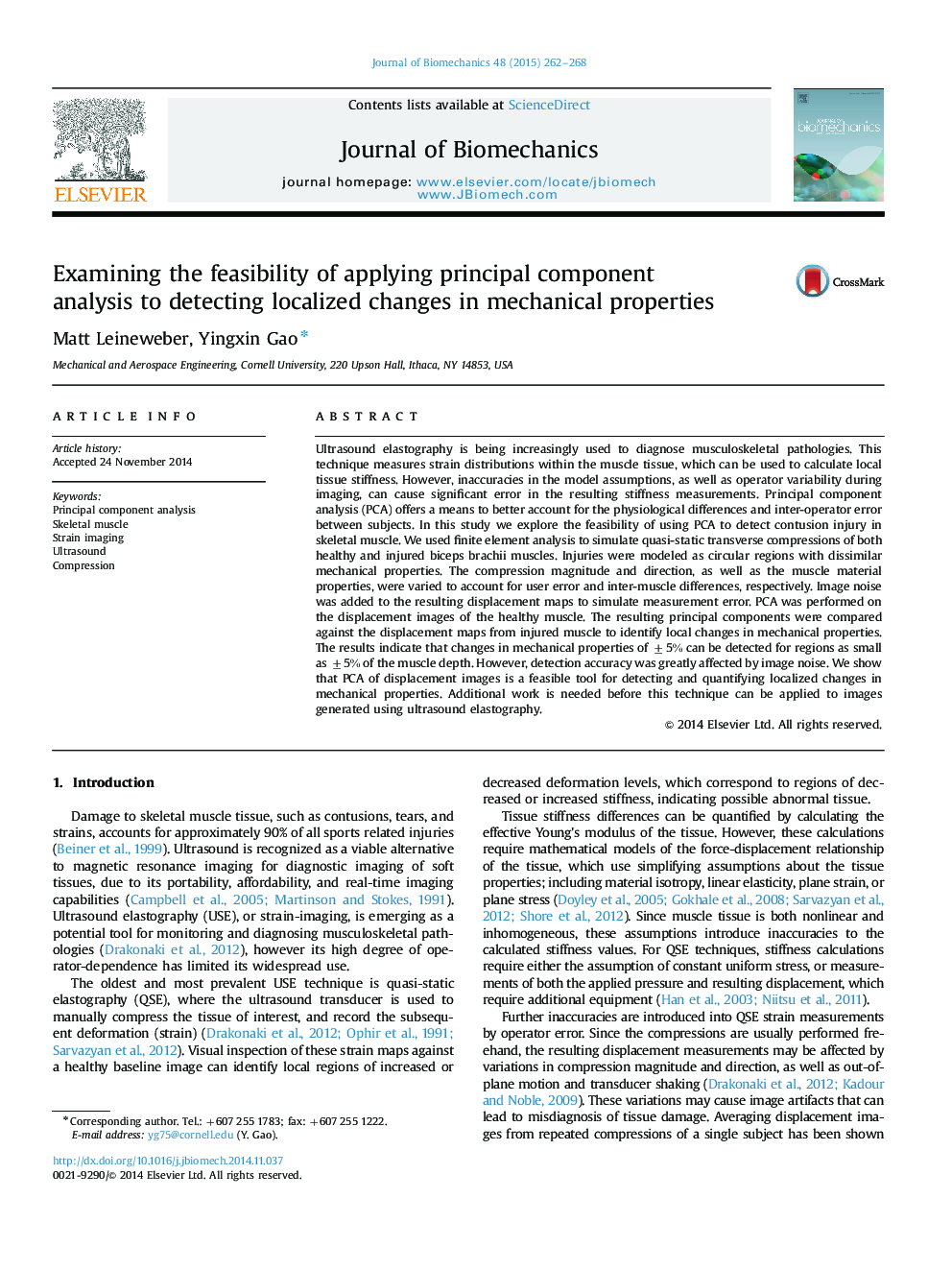| Article ID | Journal | Published Year | Pages | File Type |
|---|---|---|---|---|
| 10431610 | Journal of Biomechanics | 2015 | 7 Pages |
Abstract
Ultrasound elastography is being increasingly used to diagnose musculoskeletal pathologies. This technique measures strain distributions within the muscle tissue, which can be used to calculate local tissue stiffness. However, inaccuracies in the model assumptions, as well as operator variability during imaging, can cause significant error in the resulting stiffness measurements. Principal component analysis (PCA) offers a means to better account for the physiological differences and inter-operator error between subjects. In this study we explore the feasibility of using PCA to detect contusion injury in skeletal muscle. We used finite element analysis to simulate quasi-static transverse compressions of both healthy and injured biceps brachii muscles. Injuries were modeled as circular regions with dissimilar mechanical properties. The compression magnitude and direction, as well as the muscle material properties, were varied to account for user error and inter-muscle differences, respectively. Image noise was added to the resulting displacement maps to simulate measurement error. PCA was performed on the displacement images of the healthy muscle. The resulting principal components were compared against the displacement maps from injured muscle to identify local changes in mechanical properties. The results indicate that changes in mechanical properties of ±5% can be detected for regions as small as ±5% of the muscle depth. However, detection accuracy was greatly affected by image noise. We show that PCA of displacement images is a feasible tool for detecting and quantifying localized changes in mechanical properties. Additional work is needed before this technique can be applied to images generated using ultrasound elastography.
Related Topics
Physical Sciences and Engineering
Engineering
Biomedical Engineering
Authors
Matt Leineweber, Yingxin Gao,
